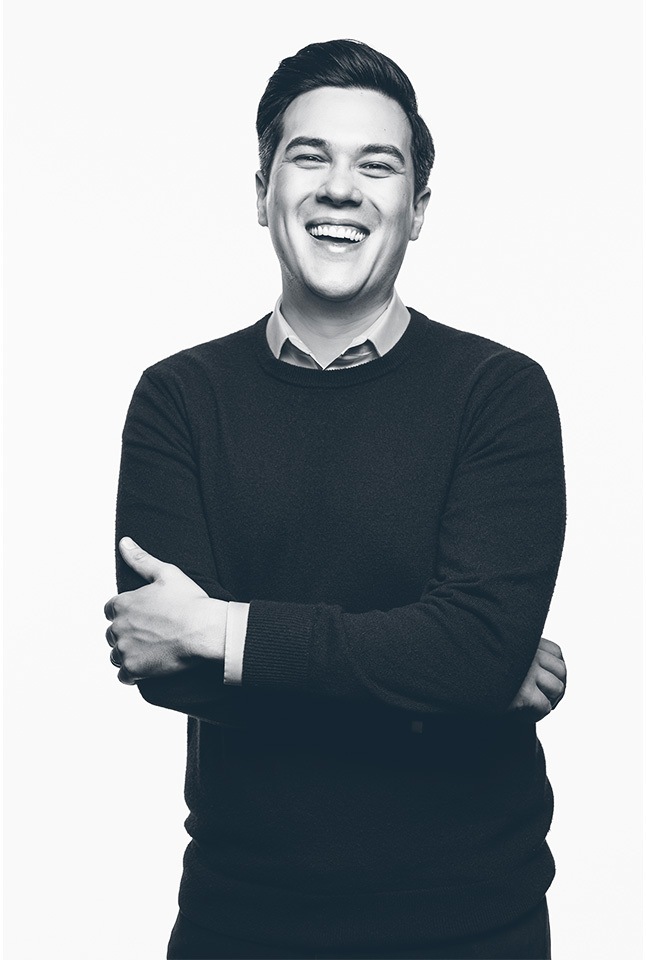
This past August, Insight announced our investment in EveryAction, a unified CRM used by thousands of nonprofits to manage fundraising, advocacy, email, volunteers, and donors. We see no better time to introduce EveryAction to Insight’s community than during election season; starting with a conversation between Insight’s Vice President, Byron Lichtenstein, and EveryAction’s Founder & CEO, Stu Trevelyan.
BL: It’s the middle of November and already snowing here in New York. More importantly, this has been a big month for EveryAction because of the Midterm Elections. Can you share more about how campaigns and nonprofits utilize your product?
ST: Most democratic campaigns use our products to power their voter contact lists, their volunteer management, and their fundraising. This cycle, our clients drove record turnouts, leading to significant Democratic party gains, which as you know, resulted in a Democratic majority in the House.
It’s an exciting time for us. If other businesses, this is like a one-day sale. You spend a lot of time figuring out how that one-day sale is going to go and trying to talk to customers to get their level of excitement up. But at the end of the day, it’s really what happens on Election Day that really matters.
It was a great cycle for us. We were proud to be a small part of it. The clients drove two hundred and fifty million voter contacts this cycle, which is more than double what happened in the last midterm in 2014. It was also over 50% of what happened in 2016, and usually presidential cycles have dramatically more interactions than the midterms. We could sense that the people were fired up. A lot of organizations did a fantastic job at recruiting volunteers by having great field programs, and that was exciting.
We had a lot of late nights and weekends, but if you have a result like we did in 2018, it all feels worthwhile.
BL: Agreed. For someone running a first campaign, can you explain how they would use your product?
ST: There are three key parts of the product.
The first is the organizational piece of the software called VAN, which is the tool that most democratic candidates and progressive organizations use for their volunteer management, event management, and their voter contact.
Part two is digital. The features include the ability to send emails, receive long line contributions, accept volunteer registrations and even registrations.
The third piece is fundraising -- that’s the NGP product. This handles the call time, fundraising event management, event invitations and registrations, requests funds from individuals, and the various compliance items.
BL: Can you talk about your evolution from working in politics to then building CTSG (your consulting group which was a precursor to EveryAction)? How did your past experiences inspire the creation of EveryAction?
ST: I started off working in nonprofits and campaigns. At that time, not all organizations utilized technology, but it was clear that it was going to be important.
I worked in White House Legislative Affairs, which was in the East Wing. Back then, if you needed to share a document with someone in the West Wing, you would have to walk all the way down through the residence and hand it off on the other side of the building. I proposed that we put in the first VAN in the White House.
In 1995, I started to say, "I think this thing, the Internet, is going to be a big deal. We can leverage it to really help nonprofits campaigns be more effective." That’s where I started CTSG, my first company, that I ran for about ten years working with nonprofits and campaigns. I sold the business to a public company and then took those observations from that experience to another level.
BL: For entrepreneurs that have a one product to one customer company, what advice would you give them in terms of when they should move to that next market or when to launch the next product. What factors should they weigh?
ST: Focus is really important. There are a lot of people who have failed because they tried to do too many things at the same time.
Using our history as an example, we had achieved a market leading position in the campaigns space when we started adding the nonprofit element to it. We understood the market. We had the majority of Democratic House members using that product before we moved onto nonprofits. Make sure you really know how to do one thing before you try and do two things.
BL: As you think about the nonprofit space overall, what’s the number one problem that your customers are facing and what do you recommend?
ST: The macro issue that’s already started to happen and will continue to happen over the next decade is that most nonprofits have been funded largely through an aging donor list that’s based on direct mail. It’s a donor list that’s literally dying. Nonprofits are having to learn new tricks and become digital.
One thing that I learned from past experiences is that raising money online is great, but we always had to integrate with other databases where people were doing their offline fundraising. Integration is a four-letter word and it’s never fun.
That’s a big piece of what we’re trying to solve with our unified CRM across digital fundraising, organizing and being able to help nonprofits continue to do their direct mail. They shouldn’t stop doing it, but the key is to add digital to direct mail and aim to run multichannel campaign. Testing shows that multichannel campaigns are the most successful tactic.
BL: You have successfully scaled two businesses. Have you noticed similarities in the business stages you encountered? Did you experience similar barriers at a certain stage in your business’ lifecycle?
ST: Yes, I think a lot of companies hit a similar transition point. In the early days, a lot of business can be done informally. There’s a smaller group of people and it may be easy to understand the interpersonal styles and dynamics of your team. I’ve noticed that when you expand to around twenty-five people, you need clearer lines of communication, roles and authority.
When you reach seventy to one hundred employees, you not only need more lines of communication and authority, but you also start needing multiple layers of management and increased differentiation of labor. At EveryAction, we’re now at the stage of having two hundred to two hundred and fifty people. This has brought new challenges like having multiple office locations, which has led us to invest more in various methods of communication. For example, this may include an internal newsletter or all-staff retreats.
As you scale, you must intentionally build ways to create connective tissue or the company will break.
BL: As CEO, what would you say was the hardest stage, for you personally and why was that?
ST: For me personally, the hardest stage of the business was when CTSG had 70 people and I started feeling alienated from my labor. As the head of an organization that size, I no longer could be a full-time doer. Instead, I needed to be working with people who are doing.
BL: What do you believe has contributed most to the success of EveryAction?
ST: Part of our special sauce has frankly been our people. If you look at our General Managers, they have sat in the seats of our customers and know what they’re experiencing.
That gives us a great understanding of what our clients are trying to do, what they want to do and what are the outcomes they need. This understanding allows us to create innovations to succeed in ways that they hadn’t even realized.
BL: Let’s talk about the future. What gets you really excited about the next five, ten, however many plus years of EveryAction.
ST: A lot of the folks at EveryAction went into this business looking for a lever. What’s the longest lever that we can pull to create the most good?
Nonprofits are in a transitional point where they can either risk having their donor lists die or they could use multiple channels to do things more efficiently. What excites me is the idea of helping nonprofits jump over this chasm.
There’s just so much that needs to be done in the world and helping these organizations do that is really exciting to us.
BL: What led to your decision to fundraise and why did you want to partner with Insight?
ST: We were growing 50% a year and we felt like, "Wow, we have this really great opportunity to both organically and inorganically grow". We had a couple of smaller companies talking to us and saying, "We’d really love for you to acquire us. We love what you’re doing". We didn’t have those resources to do that nor the experience that Insight has, in terms of taking companies from 40 million to a 100 million to maybe bigger.
Also, Insight Onsite is an amazing resource right now. The ability to have a consulting unit that you can say, “From the 100+ portfolio companies you work with, I’m sure some companies have tried this thing that we’re thinking about, how’d it go?” I love the way that Insight has a book of plays rather than a playbook.
BL: We are excited to have you as part of the family.
ST: We are excited to be part of it.
Growth Gurus
Listen to other interviews with inspiring leaders from Insight Partners' portfolio!
LISTEN









